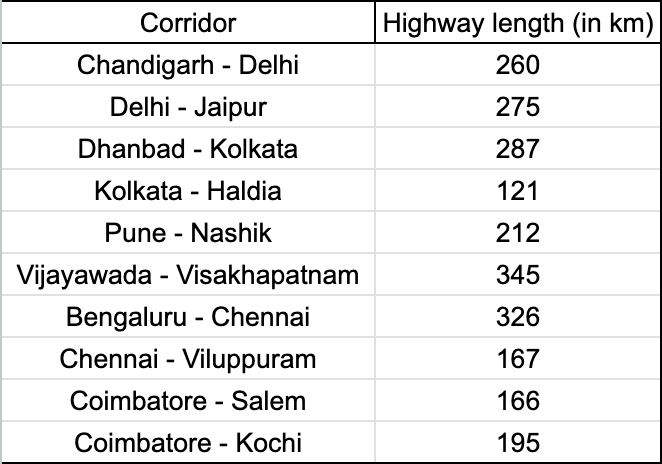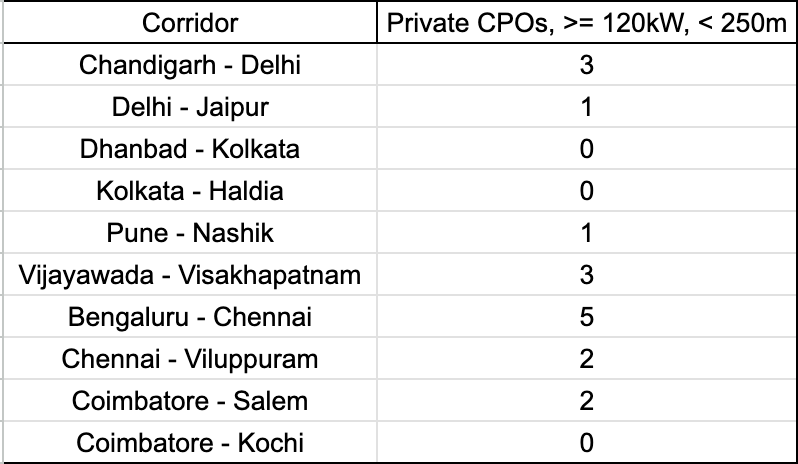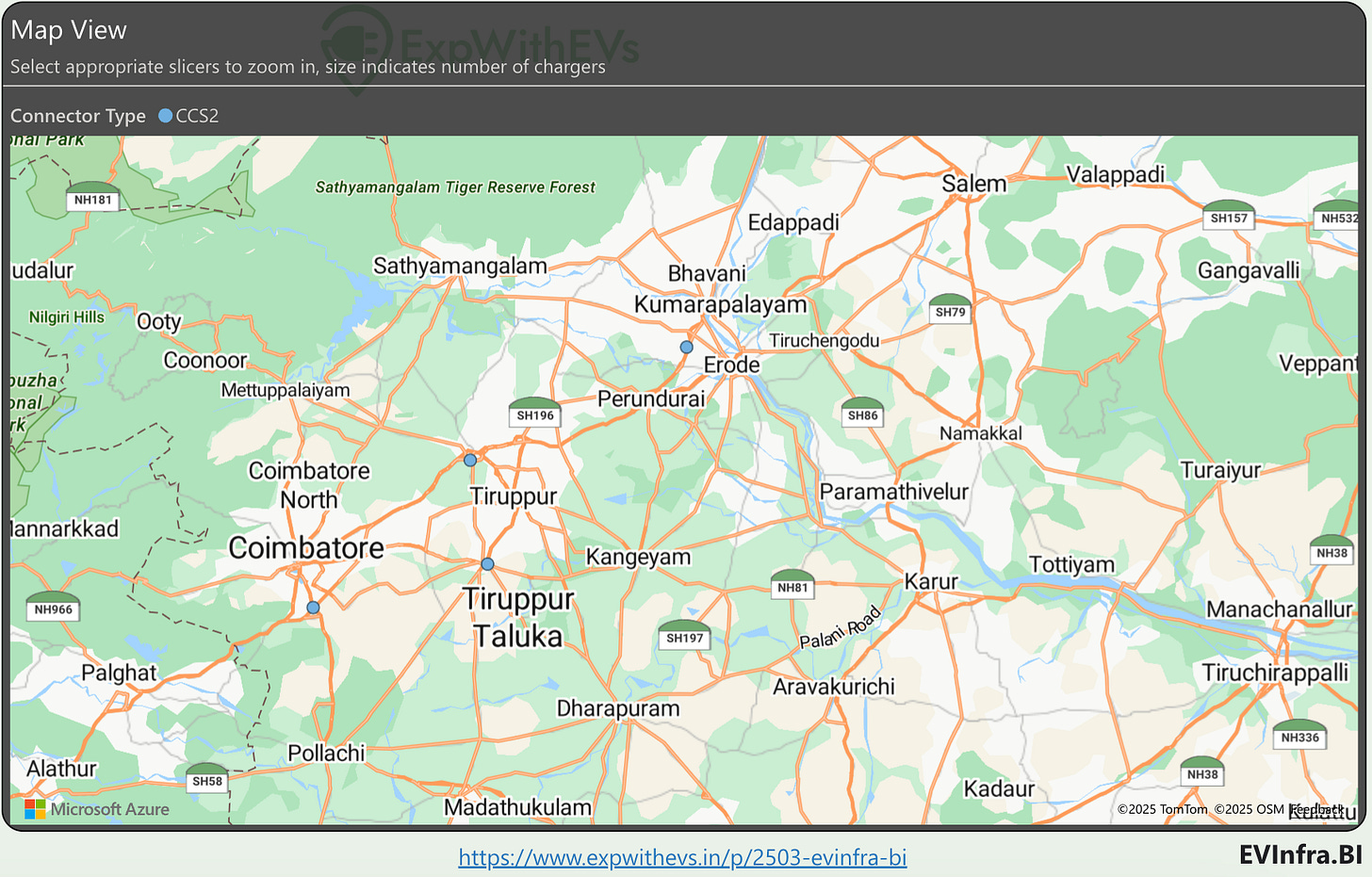Zero Emission Corridors
How we are positioned today
Last week, the Office of the Principal Scientific Advisor to the Prime Minister released a report identifying ten high-impact corridors for deploying zero emission trucks. You can read the report in detail here.
These corridors include Chandigarh to Delhi, Delhi to Jaipur, Dhanbad to Kolkata, Kolkata to Haldia, Pune to Nashik, Vijayawada to Visakhapatnam, Bengaluru to Chennai, Chennai to Viluppuram, Coimbatore to Salem, and Coimbatore to Kochi.
We will examine the existing infrastructure along these routes from the perspective of supporting electric vehicle only trucks. I believe that hydrogen or other technologies are not viable options for these corridors. We will also compare the infrastructure established by public entities such as BPCL, HPCL, and IOCL with that of various private charge point operators. This analysis will help determine whether trucks can be deployed in any of these corridors today. The short answer is: possibly.
Before we dive into today’s story, we have an announcement. We are hosting an interactive AMA (Ask Me Anything) session on charging infrastructure on 18th June 2025. Please fill out this form to sign up and submit your questions!
I am also looking to rent a BYD eMax 7 or BYD e6 on 8th June in Mumbai for personal use. Please send me a message on LinkedIn or WhatsApp!
The report was released in May 2025, but our charging infrastructure data only covers up to March 2025. We will use this data as our baseline to assess the current situation. Note that we are focusing exclusively on public infrastructure, meaning sites with no restricted access, allowing the general public to charge their vehicles without hindrance. We will consider only charging infrastructure rated at 120 kW and above along these routes. When referring to public infrastructure, we mean facilities established by public entities such as BPCL, HPCL, and IOCL, while private infrastructure refers to facilities set up by private charge point operators (CPOs) for public use, such as Tata Power, Jio-bp, and Statiq.
The majority of trucks use the CCS2 charging port, which is also used by four-wheelers. We also assume that a heavy-duty truck can travel approximately 150 km on a single charge.
Public infrastructure
BPCL, HPCL, and IOCL have established chargers on only three of the ten identified corridors. On the Coimbatore to Salem route, these entities have installed three 120 kW chargers within 250 meters of the highway. Similarly, the Delhi to Jaipur route has two such chargers, and the Chandigarh to Delhi route has one public charger.
As of March 2025, none of these six chargers were operational, rendering zero-emission transport unfeasible on these corridors. Expanding the perimeter to 1,000 meters from the highway does not significantly improve the situation. The Chandigarh to Delhi route gains one additional charger, but it was also offline as of March 2025.
Assuming public entities eventually ensure these chargers are functional, trucks could potentially be deployed on the Chandigarh to Delhi and Coimbatore to Salem routes. This assumes trucks travel in both directions, not just one. However, the chargers on the Delhi to Jaipur route are positioned beyond the estimated 150 km range of a heavy-duty truck.
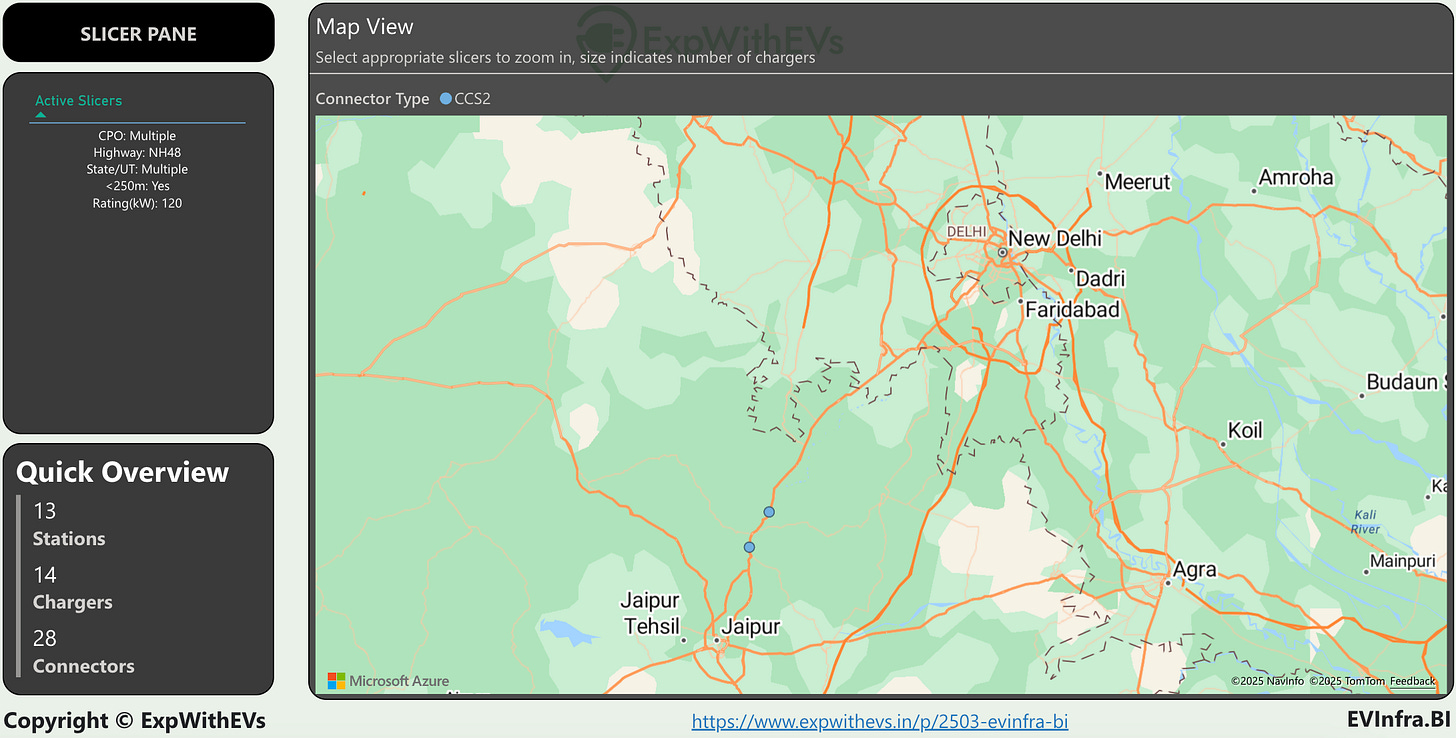
The maximum power output from Oil Marketing Companies (OMCs) is 120 kW wherever they have chargers on these highways, which is unsurprising to EVInfraBI users. In the cities connected by these corridors, public 120 kW chargers are available only in Jaipur (one), Pune (one), Visakhapatnam (one), and Kochi (eight). The presence of these chargers in cities is critical for trucks to recharge. None of the city chargers are working.
Overall, the infrastructure provided by public entities is severely inadequate. Taxpayers’ money has been wasted by OMCs on this infrastructure, with additional funds allocated under the PM E-DRIVE scheme.
Is the issue with the infrastructure itself? Could the grid be too weak to support high-capacity charging on highways and in cities? Is this the best that can be achieved on these routes?
No. A comparison with the charging infrastructure established by private players reveals a stark contrast.
Private infrastructure
Private charge point operators (CPOs) have installed three times as many chargers as public CPOs, electrifying seven out of ten corridors. The following table summarizes the number of chargers installed by private players along these routes.
It could be argued that private players had greater financial resources to establish more infrastructure, but are these chargers operational? As of March 2025, all private chargers on these routes were functional.
Are these chargers at least 120 kW? Private CPOs have deployed 120 kW chargers on the Pune to Nashik, Chennai to Viluppuram, and Coimbatore to Salem routes. On other routes, they have installed higher-capacity chargers, ranging from 180 kW to 240 kW. Grid limitations is clearly not an issue.
Six out of ten corridors are viable for truck deployment using private charging infrastructure. These include Chandigarh to Delhi, Delhi to Jaipur, Vijayawada to Visakhapatnam, Bengaluru to Chennai, Chennai to Viluppuram, and Coimbatore to Salem.

Cities along these corridors go a step further, offering 150 kW to 240 kW chargers, which enable rapid recharging for trucks, which is far more efficient than public infrastructure, assuming it even functions.
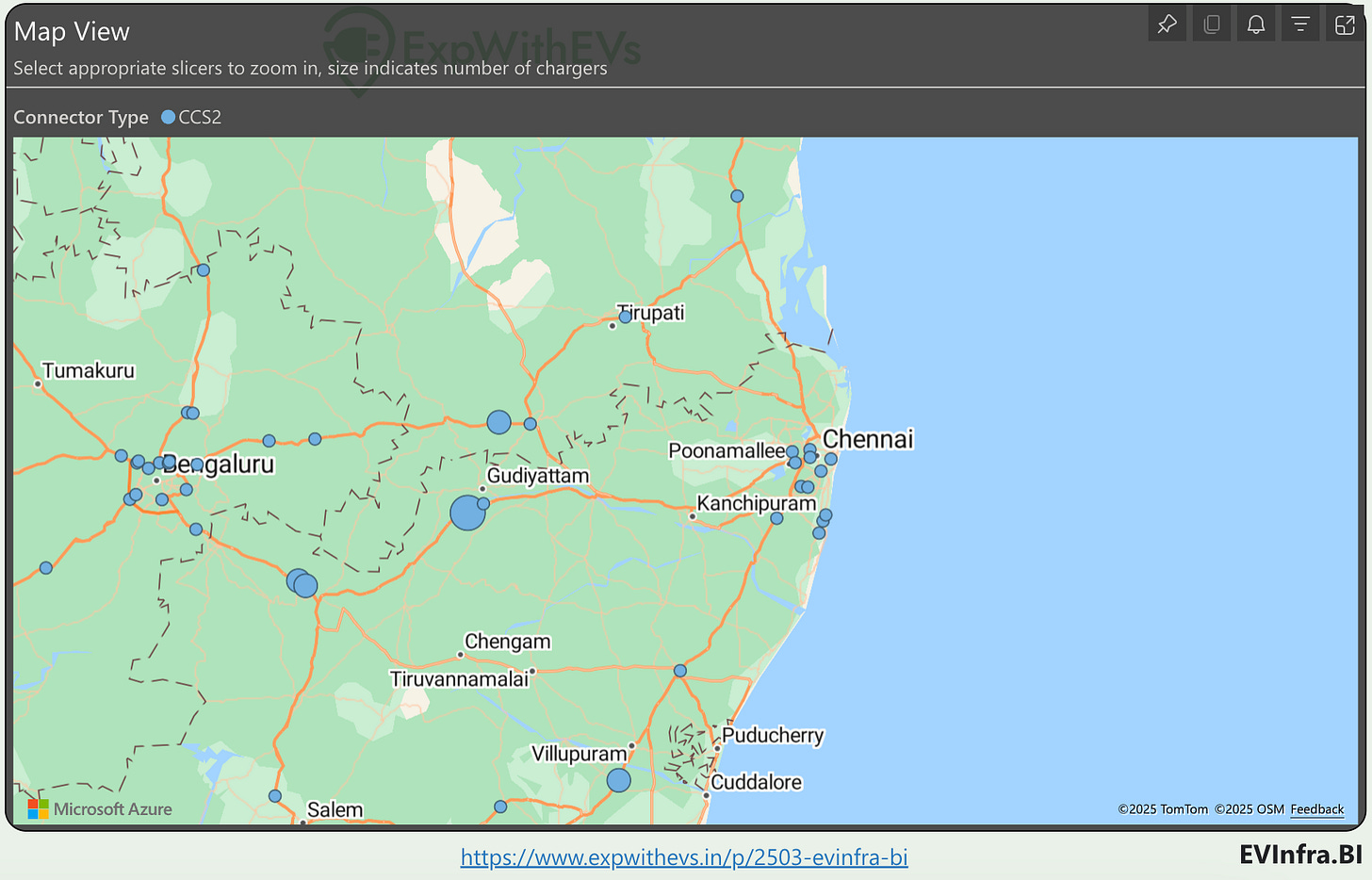
It is often argued here that the government should focus solely on ensuring a stable grid and withdraw from all forms of regulation and infrastructure development. There is no justification for Oil Marketing Companies (OMCs) to install non-functional chargers, wasting public funds. In areas where the government fails to maintain a reliable grid supply, private CPOs have taken initiative by deploying Battery Energy Storage Systems (BESS). This trend is likely to grow given the subpar performance of government authorities so far.
EVInfraBI users with a keen eye will notice how ChargeZone has established chargers along the Agra Bombay Highway, enabling heavy vehicle movement. Regular travellers on Mumbai Pune Highway must’ve seen EV buses plying on this route. Similarly, operators like Nuego are already running electric buses on corridors not covered in the government’s report.
Here’s another example where popular vlogger Mumbiker Nikhil found trucks charging at ChargeZone’s Ratlam charger.
The proposed solution for these corridors often involves developing “charger parks”, centralized locations with multiple chargers to support mass movement of zero-emission vehicles. While this concept appears promising on paper and aligns with ambitious vision projects, it overlooks a fundamental principle. As Sharon Pearson aptly stated, “How you do the little things is how you do everything.”
Here’s this week’s meme
Related reading - Rethinking EV Chargers
It takes a lot of time and effort to collect, filter out the data and compile an article. At ExpWithEVs, we do not take any sponsorship, nor do we do any promotions, allowing us to maintain an independent voice. Please take a moment to support us by becoming a paid subscriber. You’ll get immediate access to our paid archive of articles since September 2024!
This piece is proprietary and a property of ExpWithEVs. You may not republish, copy, edit, repost or reshare this piece without prior written confirmation from ExpWithEVs via email : priyans@expwithevs.in


